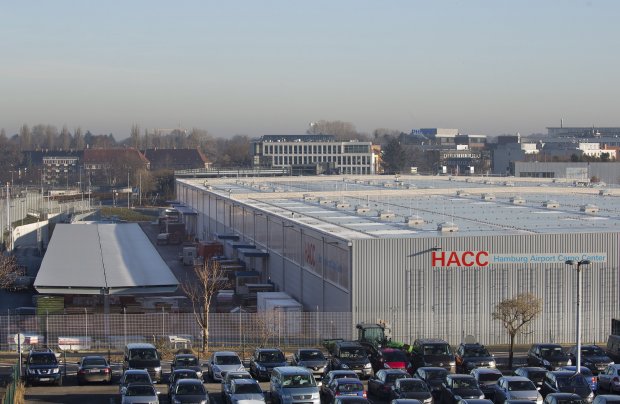Hamburg Airport Cargo Center celebrates first birthday

Efficient processes and modern technology lead to positive cargo development
Modern, efficient, visionary: this is the image acquired and proven by the Hamburg Airport Cargo Center since it entered operation one year ago. Hamburg Airport’s new air freight facility officially commenced operation on 30 May, 2016. With demonstrable success: since the HACC opening, Hamburg Airport’s cargo figures have been continually rising. From the start of June 2016 until the end of May 2017, the volume of cargo handled at Hamburg Airport rose by a total of 28.6 percent.
“With the Hamburg Airport Cargo Center, we have created a high-performance infrastructure that is optimally positioned for the future,” says Alexander Laukenmann, Managing Director of Hamburg Airport. “As we involved many users in the planning from the very beginning, the needs and expectations of the freight forwarding agents, airlines and freight handlers were taken into account in the building of the facility. The positive development of cargo figures proves that we took the right approach. I am sure that, in cooperation with our partners, we will continue this trend for the coming years.”
Cargo taking off at Hamburg Airport thanks to HACC
The total volume of cargo handled at Hamburg Airport in the first year of operation for HACC, from June 2016 to May 2017*, was 71,031 tonnes. The total cargo handled in the previous twelve months was 55,255 tonnes. This represents an increase of 28.6 percent. Of freight handled in the first year of operation, 35,623 tonnes were flown; the figure was 32,887 tonnes the previous year (+8.3 percent). The strongest growth was reported for road-shipped freight: the volume of road freight at Hamburg rose to 35,408 tonnes — an increase of 58.3 percent. For the previous twelve months, trucked freight amounted to 22.367 tonnes.
One reason for the strong growth in air cargo being handled is the return of Lufthansa Cargo’s road freight to Hamburg Airport. Before the opening of HACC, this was handled in Norderstedt. The positive development of the Emirates route to Dubai and the use of larger aircraft on the United Airlines route to New York-Newark also contributed to growth by generating additional cargo capacity with the airlines.
Efficient processes — from the truck ramp to loading the aircraft
A total of 150,000 tonnes of freight per year can be handled at HACC. The logistics center offers state-of-the-art technology and facilitates optimal operational processes – a decisive factor, in particular for time-sensitive goods. Costing more than 50 million euros, the new facility replaced the existing air cargo center from the 1960s, which was no longer able to satisfy the increasing demand for quick and efficient handling of freight. “Today, it is more important than ever that the infrastructure of a logistics facility ensures rapid, efficient processes, from the truck ramp to goods-in and security checks all the way to loading onto the aircraft. This saves time and money – and is therefore especially attractive for our customers,” explains Alexander Mueller, who as Director of Cargo at Hamburg Airport is responsible for airfreight facilities at the site.
Modern infrastructure and technology to meet every need
The 60,000-square-meter site has 44 loading ramps for articulated trucks and 36 parking positions for tractor-trailer combinations, along with three office buildings. The heart of the facility is the airfreight hall, with a floor area of around 20,000 square meters. The office and hall space at the complex have been fully tenanted since the opening of the facility. A 60-meter underpass under the street, Weg beim Jaeger, links the facility directly with the airport’s apron. Beyond this, HACC’s advantages include an in-house border inspection post (veterinary and import control), multiple customs inspection areas and temperature-controlled zones, which are particularly important for interim storage of pharmaceutical products. Modern technology such as truck docks, a palletising station, safes, radiation-protection rooms and a hazardous goods store complete the infrastructure on offer.


